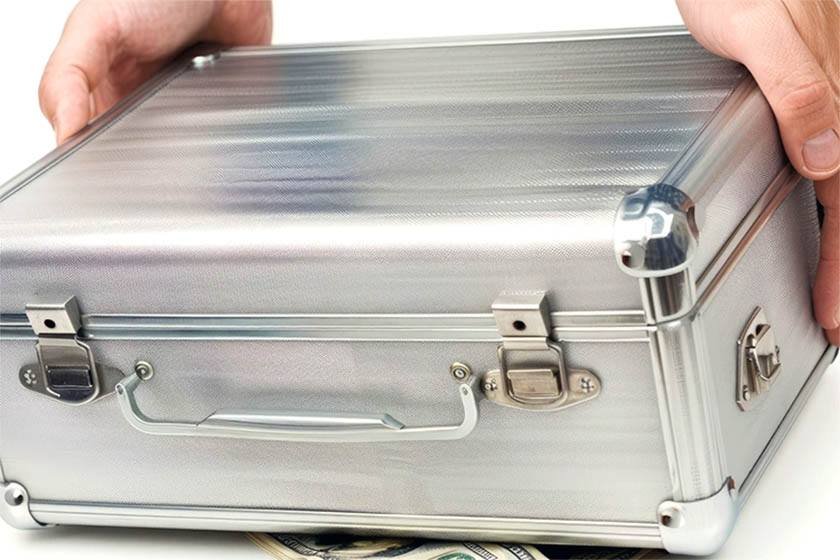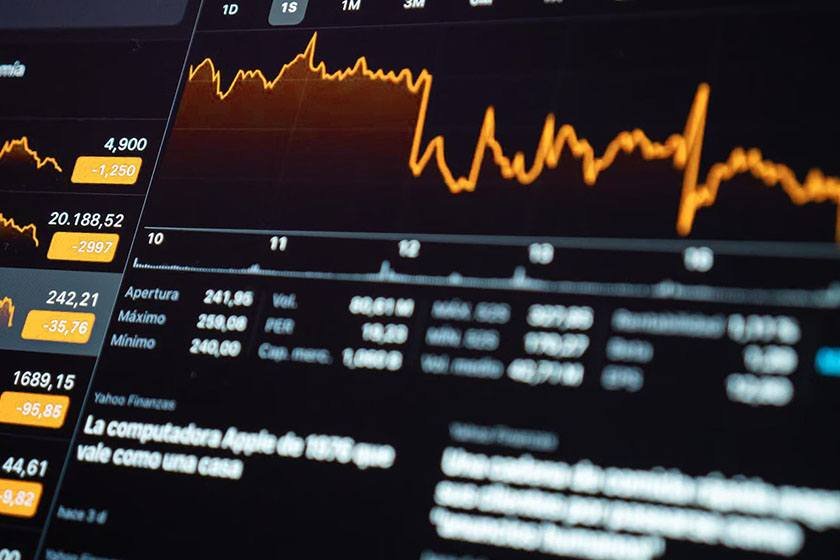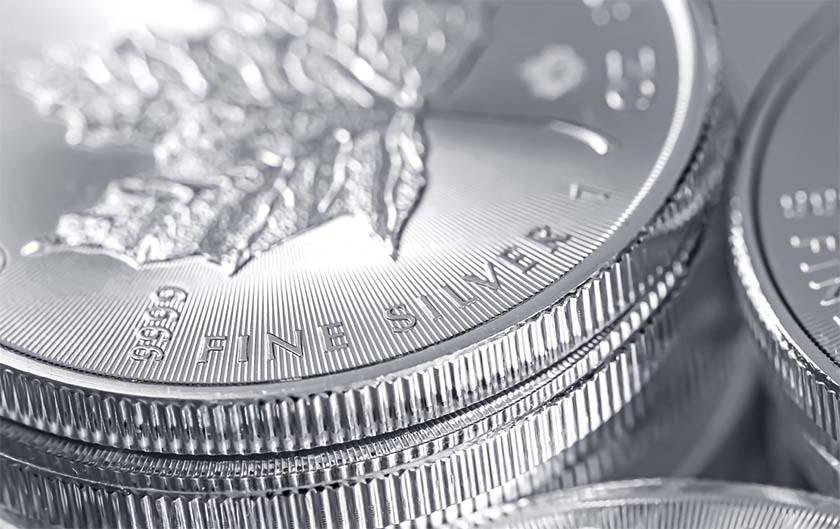Investing in silver has gained attention for its potential to diversify asset portfolios and serve as a hedge against inflation. With various avenues available to acquire this precious metal – from physical bars and coins to silver ETFs and mining stocks – understanding the best way to buy silver can be quite overwhelming.
It is essential for you to understand the factors that influence your investment, such as purity, market conditions, and associated risks, in order to make informed decisions. This guide will provide you with insights into the best ways to buy silver and the key considerations for a successful investment journey.
Why Invest in Silver?
Investing in silver can be a strategic decision for wealth preservation and portfolio diversification, particularly during periods of economic uncertainty.
As a precious metal, silver holds historical significance and has practical applications across various sectors, making it a versatile asset for investors. Additionally, silver functions as an effective hedge against inflation, providing protection against the decreasing value of currency.
By understanding market trends and monitoring silver prices, you can refine your investment strategy, enabling you to purchase silver at advantageous times and manage risks effectively.
What Are the Different Ways to Buy Silver?
When evaluating how to buy silver, it is essential to explore the various options available to align with your investment goals. You can acquire physical silver in the form of bullion or coins, which serve as tangible assets that may provide a sense of security.
Alternatively, silver ETFs and silver mining stocks offer a more liquid investment vehicle, eliminating the need for physical storage. By understanding the advantages and disadvantages of each method, including transaction fees and prevailing market conditions, you can make informed decisions about the best way to buy silver that align with your investment strategy.
1. Physical Silver
Buying physical silver involves acquiring tangible assets, such as silver coins and bars, which can be a compelling component of your investment strategy. Many investors prefer physical silver for its intrinsic value and the security it offers during times of financial uncertainty. When making a purchase, it’s essential to consider factors such as authenticity, storage options, and potential premiums above the spot price.
Owning physical silver also serves as a hedge against inflation, as its value often increases when the purchasing power of cash declines. You can select from various storage options, including home safes or secure vaults provided by specialized storage facilities, ensuring peace of mind regarding the safety of your assets.
The authentication processes used by reputable dealers provide an added layer of security, ensuring that the silver acquired is legitimate, which is essential for preserving its value over time – making it the best way to buy silver securely. This multifaceted approach to investing not only enhances your financial stability but also promotes a long-term wealth preservation strategy.
2. Silver ETFs
Silver ETFs offer you a convenient way to gain exposure to silver without the necessity of physically holding the metal. These investment vehicles track the price of silver and are traded on stock exchanges, providing high liquidity and ease of transaction. This makes silver ETFs an appealing option for those looking to integrate silver into their investment strategy while effectively managing the risks associated with market volatility.
Moreover, silver ETFs typically come with lower transaction fees compared to traditional commodities, which can significantly enhance your overall returns. You will likely appreciate the straightforward process of buying and selling these ETFs, as they can be seamlessly incorporated into a diversified portfolio.
By including silver ETFs, you can effectively hedge against inflation and currency fluctuations, aligning your investments with broader market analysis and strategic financial goals. When striving for balanced investment returns, the flexibility and cost-effectiveness of silver ETFs can be instrumental in optimizing your asset allocation.
3. Silver Mining Stocks
Investing in silver mining stocks presents a strategic way to capitalize on the performance of the silver market. These stocks represent ownership in companies that extract silver, and their value typically correlates with silver prices. By purchasing silver mining stocks, you have the potential to benefit from both increasing silver prices and the operational success of the mining companies, making this a viable investment opportunity.
It is important to acknowledge that this type of investment carries its own risks. Market volatility can significantly influence silver prices, which in turn affects the performance of these shares.
Additionally, operational challenges such as mining regulations, labor costs, and geopolitical issues can impact a company’s profitability. Therefore, conducting thorough research into market trends and understanding each company’s operational performance is essential.
Consulting with a financial advisor can offer valuable insights into these factors, assisting you in making informed decisions while balancing the potential rewards against the inherent risks.
4. Silver Futures and Options
Silver futures and options are sophisticated financial instruments that enable you to speculate on the future price of silver. While these trading mechanisms can present substantial profit opportunities, they also carry heightened risk and complexity, making it important to consider the best way to buy silver before engaging in such investments.
It is crucial for anyone considering these investment vehicles to understand market volatility and implement a robust risk management strategy.
These instruments operate by granting you the right to buy or sell silver at a predetermined price by a specific date. Futures contracts entail obligations, whereas options provide the flexibility to decide whether to execute the trade.
Several factors can influence silver prices, including shifts in industrial demand, geopolitical tensions, and macroeconomic indicators such as inflation rates. Additionally, currency fluctuations can affect the value of silver, making it imperative for you to remain informed about market conditions.
Balancing the potential for high returns with the inherent risks associated with these volatile commodities requires thorough analysis and careful preparation.
5. Silver Coins and Bars
 When you invest in silver coins and bars, you are selecting precious metals that possess both intrinsic and collectible value. Silver coins often carry numismatic value based on their rarity and condition, while silver bars generally provide a more straightforward investment option focused on weight and purity. Understanding these distinctions can help shape your investment strategy and enhance the diversification of your portfolio.
When you invest in silver coins and bars, you are selecting precious metals that possess both intrinsic and collectible value. Silver coins often carry numismatic value based on their rarity and condition, while silver bars generally provide a more straightforward investment option focused on weight and purity. Understanding these distinctions can help shape your investment strategy and enhance the diversification of your portfolio.
It is also essential to consider market dynamics that influence the value of these assets, such as economic conditions, fluctuations in supply and demand, and global geopolitical events.
Silver coins with limited mintage or historical significance may appreciate in value beyond their metal content. For those seeking the best way to buy silver, the liquid nature of silver bars makes them a more favorable choice for quickly converting investments into cash.
By recognizing these nuances, you can make more informed decisions regarding your asset allocation strategies, aligning your portfolio for both growth and stability in uncertain markets.
What Are the Factors to Consider When Buying Silver?
When purchasing silver, it is essential to consider several critical factors to ensure you make informed decisions that align with your investment strategy.
The purity and quality of the silver you buy can significantly affect both its value and marketability. Additionally, being aware of the premiums and fees associated with various buying methods, as well as current market conditions, will help you optimize your silver investments and avoid unnecessary pitfalls.
1. Purity and Quality
The purity and quality of silver are critical factors to consider when making your purchase, as these elements directly impact its market value and investment viability. Silver is typically measured in terms of purity, with .999 being the standard for investment-grade silver. Understanding these measurements will help you assess the true worth of your silver holdings in relation to the prevailing spot price and mitigate potential investment risks.
When contemplating an investment in silver, it is essential to verify the metal’s authenticity by checking for reputable hallmarks or certificates of authenticity. Third-party verification can also significantly enhance trust in the quality of the silver you are considering for purchase.
By conducting thorough due diligence and confirming these attributes, you not only enhance the security of your investment but also potentially increase your return on investment. Remember, the higher the purity and quality, the more likely the silver will retain its value over time, making it a strong addition to any diversified portfolio.
2. Premiums and Fees
When purchasing silver, it is essential to be aware of the premiums and fees that may accompany your investment. Premiums can vary based on the type of silver you choose, such as coins versus bars, and generally reflect the costs associated with production and distribution. Understanding transaction fees and delivery options is essential for finding the best way to buy silver, as it helps you choose reputable dealers and optimize your overall investment costs.
Different types of premiums may include the dealer’s markup, which is influenced by market conditions and can range from 5% to over 20%. Coins often come with higher premiums due to their collectible nature and demand among investors. Additionally, shipping and handling fees can impact the total expense, so it is wise to factor these into your calculations.
Evaluating multiple reputable dealers can clarify these costs, ensuring that you make an informed decision, particularly during times of market volatility when premiums may fluctuate significantly.
3. Storage and Insurance
 Proper storage and insurance are essential components to consider when investing in physical silver, as they protect your assets from theft and damage. Whether you decide to store your silver at home, in a safe deposit box, or with a specialized storage service, assessing the best storage options for your investment portfolio can provide peace of mind. Obtaining appropriate insurance coverage can further safeguard your investment against unforeseen risks.
Proper storage and insurance are essential components to consider when investing in physical silver, as they protect your assets from theft and damage. Whether you decide to store your silver at home, in a safe deposit box, or with a specialized storage service, assessing the best storage options for your investment portfolio can provide peace of mind. Obtaining appropriate insurance coverage can further safeguard your investment against unforeseen risks.
Home storage offers immediate access but carries a heightened risk of theft. On the other hand, safe deposit boxes, located in banks, provide security but may be inconvenient during emergencies.
The best way to buy silver often involves using specialized storage services, which not only ensure enhanced protection but also frequently offer insurance options tailored to your needs, providing an ideal balance between accessibility and security.
It is crucial to weigh the advantages of each option against your risk management strategy, taking into account factors such as insurance coverage limits and potential costs associated with replacement in the event of loss or damage. Making informed choices about both storage and insurance can help mitigate investment risks and enhance the overall security of your silver holdings.
4. Liquidity
Liquidity is a crucial factor to consider when investing in silver, as it determines how easily you can convert your silver holdings into cash. Understanding market conditions and the demand for silver at any given time can significantly impact your investment horizon and the potential returns you can expect. Therefore, assessing liquidity is essential for making informed decisions about when to buy or sell silver.
Evaluating liquidity requires more than just examining current market prices – it also involves a careful analysis of trends and overall market sentiment. Factors such as changes in industrial demand, geopolitical events, and economic indicators all influence the robustness of the silver market.
When looking for the best way to buy silver, it is equally important to consider transaction fees, which can vary significantly between dealers and platforms and, in turn, affect your net returns.
By staying informed about these factors, you can capitalize on favorable conditions while minimizing losses during downturns, ultimately leading to a more effective investment strategy.
5. Market Conditions
Understanding current market conditions is essential for anyone looking to buy silver, as these factors significantly influence silver prices and your overall investment strategy.
You must consider how geopolitical events and shifts in industrial demand can cause fluctuations in silver’s value. Given that silver is often viewed as a hedge against inflation, it becomes crucial to analyze macroeconomic trends that indicate economic health or downturns. Additionally, observing price trends in relation to central bank policies and interest rates can provide valuable insights into potential future movements.
By thoroughly assessing these elements, you can not only safeguard your wealth but also identify optimal moments for buying or selling, thus enhancing your portfolio strategies.
What Are the Risks of Investing in Silver?
 Investing in silver can be rewarding – however, it is crucial to acknowledge the inherent risks associated with this market. Factors such as market volatility, economic and political uncertainties, and shifting demand can significantly impact investment outcomes.
Investing in silver can be rewarding – however, it is crucial to acknowledge the inherent risks associated with this market. Factors such as market volatility, economic and political uncertainties, and shifting demand can significantly impact investment outcomes.
By understanding these risks and developing a well-thought-out silver trading strategy, you can mitigate potential downsides and align your investments with your financial goals.
1. Market Volatility
Market volatility poses one of the primary risks associated with investing in silver, as prices can fluctuate dramatically in short periods.
Understanding the factors that contribute to these price changes, including economic indicators and market sentiment, is crucial for any investor seeking the best way to buy silver and trade it effectively. This knowledge will enable you to time your purchases and sales more strategically, maximizing your potential returns.
Several elements can drive this volatility, such as geopolitical tensions, changes in interest rates, and shifts in currency strength, all of which can influence silver demand. It is essential for market participants to remain aware of seasonal trends that impact both silver production and usage.
To mitigate these risks, investors often employ strategies such as:
- Dollar-cost averaging, which involves investing fixed amounts over regular intervals to reduce exposure to price fluctuations;
- Utilizing stop-loss orders to protect against sudden downturns.
Conducting thorough silver price analysis can further enhance your decision-making, allowing for better positioning in a fluctuating market.
2. Counterparty Risk
Counterparty risk is a significant consideration when investing in silver, especially through vehicles such as silver ETFs and futures. This risk pertains to the possibility that the other party involved in a transaction may not fulfill their contractual obligations.
Therefore, it is essential to conduct thorough research and select reputable dealers or investment platforms to minimize exposure to counterparty risk.
You should be particularly vigilant about the platforms you engage with, as the potential for financial instability or fraud can lead to substantial losses. Consulting with a financial advisor is advisable to navigate these complexities effectively and ensure that appropriate risk management strategies are in place.
By choosing established firms with strong compliance records and solid reputations, you can better protect your silver investments.
Understanding the degree of counterparty risk associated with various investment options will enable you to make more informed decisions, ultimately enhancing your long-term investment success.
3. Economic and Political Factors
Economic and political factors can significantly influence the silver market, presenting additional risks for you as an investor. Changes in monetary policy, geopolitical tensions, and shifts in supply and demand can all impact silver prices and the viability of your investments.
By staying informed about these factors, you can better anticipate market trends and understand the best way to buy silver, adjusting your investment strategy accordingly.
Understanding how changes in interest rates may lead to a stronger or weaker dollar is crucial, as this directly correlates with silver’s valuations. Geopolitical tensions, such as trade wars or conflicts, can create uncertainty in markets, prompting investors to seek refuge in precious metals as safe havens. Additionally, factors like mining regulations and global production levels influence supply chains, affecting availability and pricing.
Conducting thorough market research and analysis is critical, give the power toing you to identify optimal entry and exit points, ultimately improving your investment fundamentals and timing strategies.
4. Storage and Security Risks
Storage and security risks are critical considerations when investing in physical silver. Improper storage can result in theft or damage, making it essential to invest in adequate security measures to protect your assets. Being aware of these risks is key to maintaining the integrity of your investment.
As an investor, you have various storage solutions at your disposal, including secure home safes, bank safety deposit boxes, and specialized bullion storage facilities. When considering the best way to buy silver, each option comes with its own set of advantages and disadvantages, so it is vital to understand the inherent risks associated with each.
For instance, while home safes provide immediate access, they may not offer the level of security necessary to deter professional thieves.
Conversely, institutional vaults provide robust security but may present challenges regarding accessibility. Additionally, insurance plays a crucial role in safeguarding against loss or damage, and it should be carefully evaluated to ensure that your wealth preservation strategy aligns with your investment goals.
For more information, see our FAQ section at the bottom.

